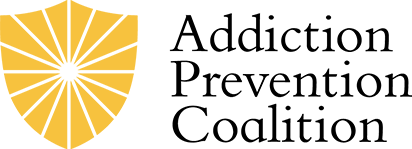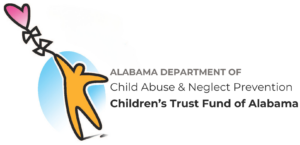Co-Occurring Disorders
Have you ever heard of rheumatic fever? Chances are, you haven’t. Rheumatic fever results from improperly treated scarlet fever, which is now considered a very rare condition in the medical field. Travel back to 1970 when the conditions were more common and you’ll find a physician named A.R. Feinstein who worked closely with patients who suffered from rheumatic fever. He recognized a phenomenon in patients who were struggling with the worst cases of rheumatic fever and found that these patients had other conditions that appeared to exacerbate rheumatic fever symptoms. The term “comorbidity” was coined to describe his observations: symptoms of one condition are made worse in patients who also suffer from other diseases. 
“Co-occurring disorders” is another term to describe this phenomenon, as is the term “dual diagnoses.” These terms are often referred to in the context of substance abuse and dependence: when a person struggles with both a Substance Use Disorder and at least one other mental/behavioral health disorder, they are said to have dual diagnoses because the two (or more) diseases co-exist and fuel one another. Think of it this way: if your depression symptoms alone average at about a 3 out of 10 on the intensity scale, and your symptoms of alcohol abuse alone average at about a 4 out of 10, the combination of the two won’t necessarily result in suffering that is a 7 out of 10. It’s more likely to feel worse than that.
Common Co-Occurring Disorders
The most common mental health disorders are anxiety disorders and mood disorders (i.e. depression, Bipolar I and II, etc.), trauma and stressor-related disorders (PTSD), obsessive-compulsive disorders, attention-deficit disorders, and personality disorders. The presence of one or more of these disorders increases the risk of developing dependence on substances by almost 50%. The same goes for the presence of a substance use disorder: prolonged drug abuse makes users 50% more likely to develop a mental health disorder.
It’s the classic chicken-or-egg uncertainty; do mental health disorders cause substance abuse or does substance abuse cause mental health issues? So far, researchers haven’t found definitive proof of causality, but there is more than enough data to suggest strong correlation between the two types of conditions. Either can come first, and both can develop together. The National Institute on Drug Abuse (NIDA) found it imperative to examine dual diagnoses for three main reasons: substances often cause users to experience mental health disorder symptoms, mental health disorders often cause people to self-medicate with substances, and overlapping factors (deficits in brain functioning, genetics, exposure to trauma or stress in childhood) make all symptoms worse.
Some combinations are more common than others. In the general population, there are high rates of people with anxiety disorders (Generalized Anxiety Disorder, Panic Disorder, etc.) and trauma and stressor-related disorders who develop substance use disorders. In the population of people who abuse prescription painkillers, roughly 43% of them have diagnoses of Major Depressive Disorder or anxiety disorders. About 40-60% of those with genetic vulnerabilities—particularly with genes that influence feel-good chemicals like dopamine and serotonin—develop substance use disorders or behavioral health disorders. In fact, the ways in which circuits in the brain are impacted by ADHD and drug cravings are very similar.
Polysubstance Abuse
Given the statistics on interactions between substance use and mental health disorders, it follows that people who abuse and become dependent upon multiple substances tend to experience the highest number of comorbid symptoms. “Polysubstance abuse” is the term to focus on here.
 Among heroin users, 66% also develop addiction to nicotine products. Think cigarettes aren’t that bad? Well, heroin users are also extremely likely to develop addiction to alcohol (25% of users) and cocaine (20% of users). Speaking of cocaine, 60% of people who abuse this substance also abuse alcohol, 48% abuse nicotine, and 21% abuse cannabis. According to SAMHSA (Substance Abuse and Mental Health Services Administration), recent trends are showing an increase in the combination of polysubstance abuse of painkillers and benzodiazepines (i.e. Xanax, Klonopin). The numbers aren’t all bad though: rates of dual diagnoses that include alcohol abuse appear to be trending downward.
Among heroin users, 66% also develop addiction to nicotine products. Think cigarettes aren’t that bad? Well, heroin users are also extremely likely to develop addiction to alcohol (25% of users) and cocaine (20% of users). Speaking of cocaine, 60% of people who abuse this substance also abuse alcohol, 48% abuse nicotine, and 21% abuse cannabis. According to SAMHSA (Substance Abuse and Mental Health Services Administration), recent trends are showing an increase in the combination of polysubstance abuse of painkillers and benzodiazepines (i.e. Xanax, Klonopin). The numbers aren’t all bad though: rates of dual diagnoses that include alcohol abuse appear to be trending downward.
Because polysubstance abusers and people with dual diagnoses experience exacerbated symptoms of multiple conditions, treatment must be tailored to address as many conditions as possible. Before we review modern treatment considerations, it’s important to examine the history of treatment for co-occurring disorders to understand what we see today in treatment centers.
History of Research
Let’s time travel again, this time all the way back to the 1860s. The first treatment center for alcohol abuse opens in New York under the name “inebriate asylum.” As more and more people sought help through these asylums, treatment expanded to address opiate and stimulant abuse as well. The first inebriate home for women opened in Chicago in 1867. People were starting to recognize substance abuse as a malady of epic proportions. Thus, by 1870, “inebriety” is established as a disease and the American Association for the Cure of Inebriety is formed. I’d love to say everything was sunshine and roses from here, but this was the beginning of what would prove to be a rollercoaster for research and treatment for addiction.
By 1900, nearly every inebriety asylum had closed and this marks a dark period for mental health. Forced sterilizations became common for people suffering from alcoholism and drug addiction, and treatment all but disappeared except for the affluent in society. Despite the downturn of prioritizing substance abuse treatment for nearly three decades, a movement began in the 1930s that spurred halfway houses and meetings where alcoholics and addicts could recover with the help of community support. Around this time, Alcoholics Anonymous was formed.
The success of the recovery community was undeniable. In the 1960s-70s, the insurance industry—including physicians who had been following the halfway house movement as a method for treating addiction—recognized the need for a renewal of substance abuse treatment. As a result, insurance companies began reimbursing the treatment of alcohol and drug abuse on par with other diseases. Remember our friend A.R. Feinstein’s observations of comorbidity in patients? His term gained traction and by 1985, treatment centers were beginning to focus more on special populations, including those who suffered from dual diagnoses. Things were looking up, but the trends didn’t remain positive around this time.
As the medical community was recognizing the need for treatment of those suffering from addiction and responding by expanding treatment modalities, the U.S. government was making moves that would subsequently threaten funding for treatment facilities. Around 1986-87, the Anti-Drug Abuse Act was passed and shifted financial resources away from treatment centers and more towards programs that would help workers struggling with substance abuse and dependence (i.e. drug-free workplace initiatives). A sizable portion of funding also went to law enforcement, and this time period marked the “war on drugs.” Treatment centers struggled to ensure patients would adhere to their programming and eventually many facilities closed in response to changes in managed care.
One positive trend around this time came as a result of those closings. The downsizing of facilities that came with aggressive managed care programs led to the integration of substance abuse units with psychiatric units. While inpatient facilities declined around this time, intensive outpatient and other outpatient-level programs rose. And more good news: research into best practices and treatments for dual diagnoses continues to be prioritized socially and economically. So while we have a ways to go in discovering more links between substance addiction and behavioral health disorders, we are on a path that will bring more insight in years to come.
Treatment Considerations
Integrated treatment for co-occurring disorders is the most effective modality. Most substance abuse treatment centers today are structured to address many of the issues surrounding mental health illnesses, including experiences with trauma and grief that are also closely linked with behavioral health disorders. My first job in the field of clinical mental health counseling was at one such treatment center. I’ve seen firsthand how impactful it is to treat all facets of an individual’s mental, emotional, physical, and spiritual needs—not just substance abuse. 
Unfortunately, people who suffer from dual diagnoses and polysubstance abuse tend to display patterns of poor adherence to treatment. There are high rates of dropout in various levels of treatment, from hospitalization and residential facilities to outpatient offices. To help increase treatment adherence, especially if one is in treatment that addresses substance abuse and dependence, it’s best to tap into as many resources as possible for recovery: social interaction through meetings and sponsorship, a routine of physical activity, counseling, and medication management (when appropriate). These resources are all vital parts of an individual’s recovery because reports from newly-sober individuals with co-occurring disorders overwhelmingly show that symptoms of mental health disorders increase for some time despite sobriety from substances.
Despite the highs and lows over the years of research and development of treatments, today’s options for addressing co-occurring disorders are better than ever. Some medications treat symptoms of both substance use disorders and behavioral health disorders. And since its inception in the early 1900s, the recovery community continues to expand and grow stronger. This integrated approach helps people who experience the vicious cycle of mental health and addiction symptoms. More understanding of the connections present in those cycles can help the addicted person’s loved ones make sense of what they’re experiencing, as well.









